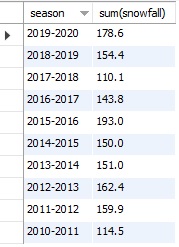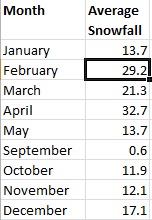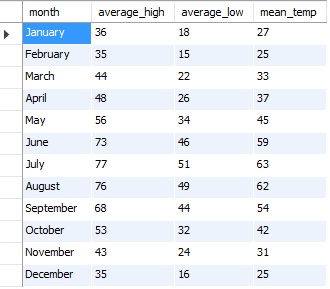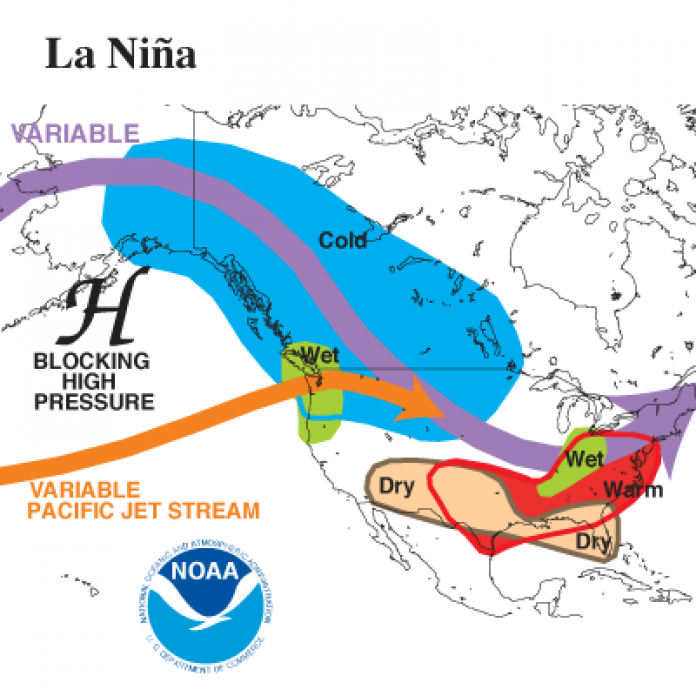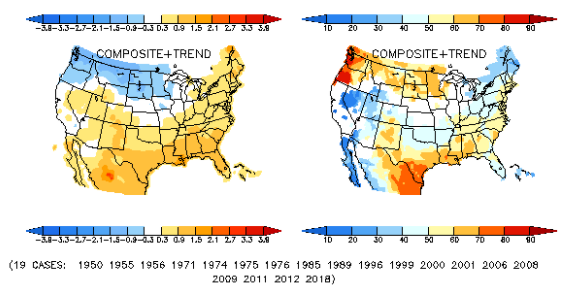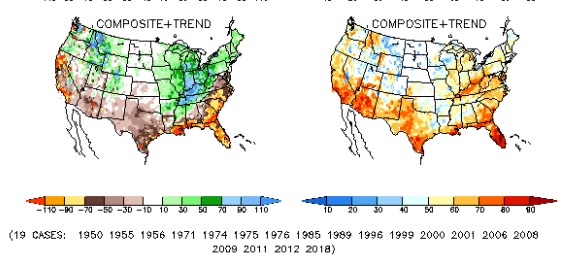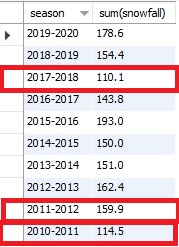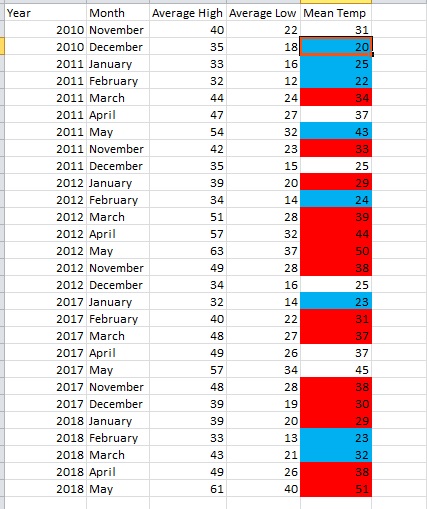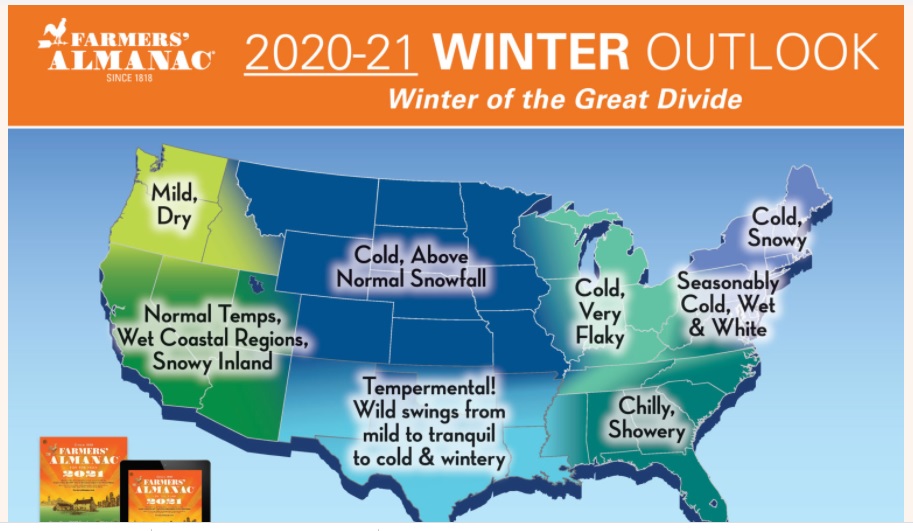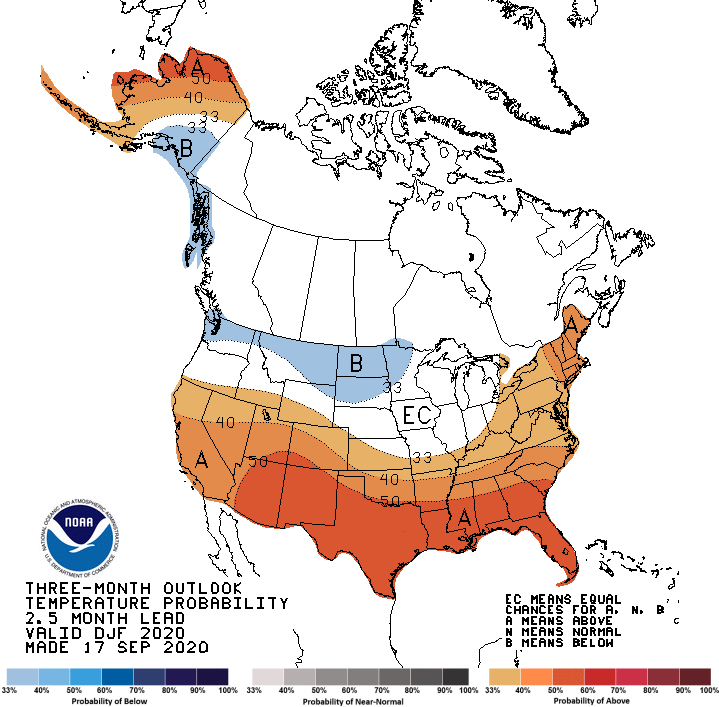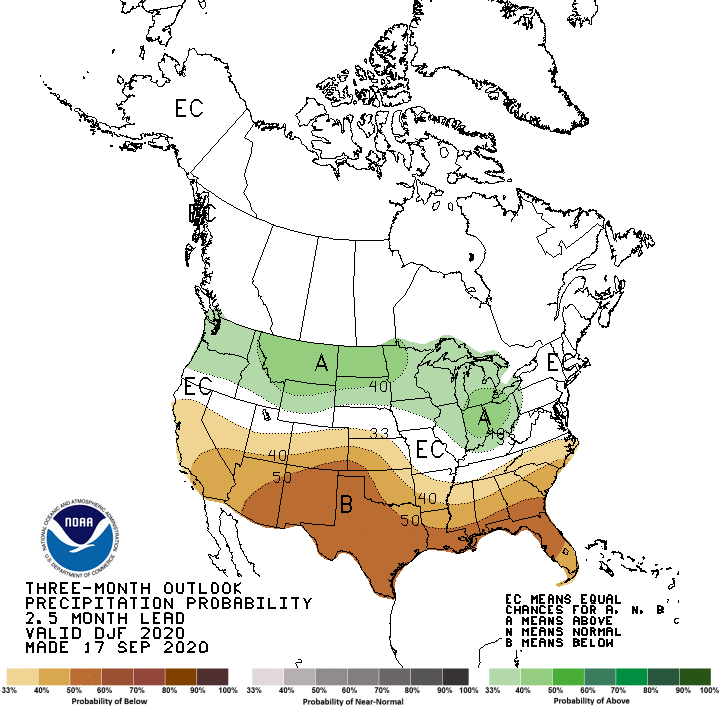Winter is quickly approaching here in the Colorado Front Range Mountains and Foothills. For those who have lived here a while, each winter is different. We have been here in Nederland a little over 10 years and have seen everything from a 43 inch snowstorm to 90 mph winds during the cold season. We have also seen relatively mild winters with lighter snow amounts. What is a normal winter here in Ned? Let’s first take a look at our seasonal snowfall over the past ten years:
This gives us a 10 year seasonal average snowfall of 151.7 inches. Here is how this breaks down by month:
As for temperature, here are the 10 year average high, low, and mean temperatures for each month of the year:
Of course we are focused on the temperatures from October through May, the months that we can get decent snowfalls. This gives us a good idea of what we get in terms of snowfall and temperatures on average.
Here is what we know about the upcoming winter months:
1) We are in the middle of a pretty severe drought
2) La Nina conditions will persist in the equatorial Pacific
Let’s start with the La Nina piece of the equation. La Nina is also known as the cold episode of the El Nino Southern Oscillation (ENSO). La Nina’s occur then the equitorial waters in the eastern Pacific are colder then normal:
This in turn affects the position of the jet stream over the United States:
With the more northern jet stream and the resultant northern storm track, La Nina winters tend to be:
- Wetter in the Pacific Northwest
- Drier across the American Southwest
- Warmer over the southeastern United States
- Colder over the northern United States
The NOAA map above is not very detailed with regard to where the states are, but Colorado is between the warmer/drier weather across the south and the colder/wetter weather to the north. NOAA provides a more detailed climatological study of the impacts of La Nina Winters on the United States:
For 19 La Nina episodes since 1950, this shows the composite effects (plus trends) of La Nina to be colder across the northern states and warmer across the south including much of Colorado. As for precipitation:
For the same 19 La Nina episodes since 1950, there is a very strong signal for dry conditions across Southern California, Arizona, New Mexico, and Texas. In Colorado, there is a strong signal for above normal precipitation in the central and northern mountains, but not so much on the Eastern Plains. There is also above normal precipitation in the Pacific Northwest.
My observations only span 10 years, but during this time there have been three La Nina winters:
2010-2011 (-1.2)
2011-2012 (-0.78)
2017-2018 (- 0.75)
The number in parenthesis is the average 3.4 Nino Index for that winter. It is a way of quantifying the relative strenght of the La Nina episode. A smaller negative number means a stronger La Nina (e.g. -1.2 is stronger than a -0.75). Highlighting our seasonal snowfall for these winters shows:
we see that two out of three of our La Nina winters have had much below normal snowfall.
As for temperature, the signal is not as clear cut:
Blue means the mean temperature for the month was below normal. Red means it was above normal. The strong La Nina winter of 2010-2011 was overall colder than average. 2011-2012 saw above normal temperatures. 2017-2018 was also warmer than normal.
Finally, the largest single storm snowfall events here in Nederland in these La Nina winters were:
2010-2011 April 13-14, 2011 16 inches
2011-2012 February 2-3, 2012 37 inches
2017-2018 October 10, 2017 10 inches
In La Nina winters it is much less likely that we will see those big fall and spring upslope storms. Occasionally, the Madden Julian Oscillation (MJO) makes an appearance during a La Nina. If I remember correctly, this is what happened in February 2012, and we ended up with 37 inches of snow. However, this is unusual. The MJO is more active in ENSO neutral winters. There is also the Pacific Decadal Oscillation (PDO), but I’ve had trouble finding current PDO values.
Wind is also a big deal here in the Colorado Front Range in La Nina Winters. Looking at the jet stream position on the map above, note that it passes over the Central Rockies. Because of this, there is much more energy available to fuel the strong and sometimes damaging Chinook winds. These can howl through Nederland for days on end shaking our houses and fraying our nerves.
Let’s take a look at the 2020-2021 winter outlooks from the Farmer’s Almanac and the National Weather Service:
And from NOAA:
Note that La Nina winters can be very snowy for locations to the west of the Continental Divide in northern Colorado, including Steamboat Springs and Winterpark. The Indian Peaks can also pick up a decent snowpack. The issue with Nederland and the surrounding Foothills communities is that the prevailing winds tend to downslope us, reducing precipitation but bringing a lot of wind.
Based on the predictions from the Climate Prediction Center, this will be a moderate La Nina, closest in strength to the 2010-2011 La Nina. Take all of this into consideration, here is my winter outlook for Nederland and the Front Range Foothills:
1) Below normal precipitation and snowfall. Totals for the season could be only 110 – 120 inches. Our normal is 152 inches.
2) Near to slightly above normal temperatures
3) Windy. If there is one thing we will likely remember from this winter, it will be the winds.
The winds are what worry me the most. Given our severe drought and the likelihood of below normal snowpack east of the Divide, we may see our fire concerns and woes extend well into the cold season.
Remember, west of the Divide, this could turn into a good ski year, especially in the northern mountains.
